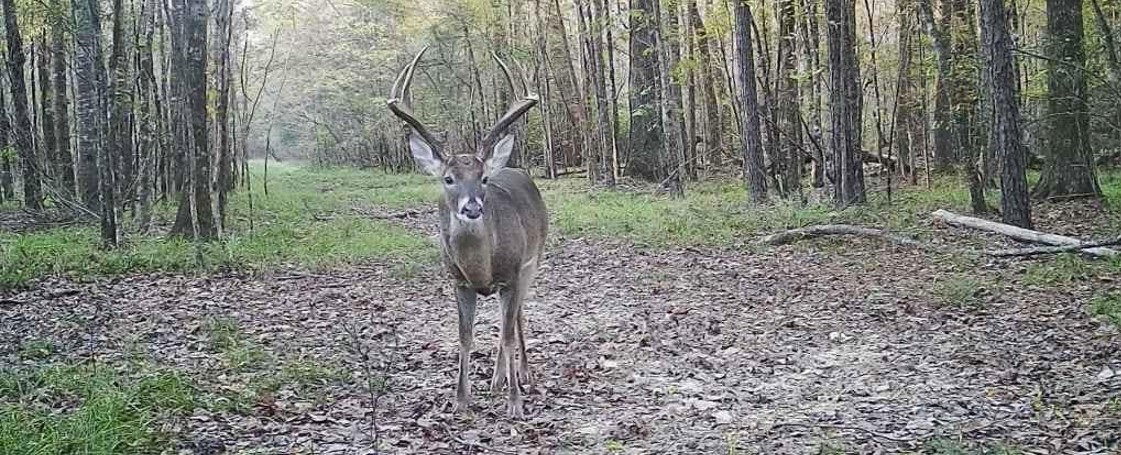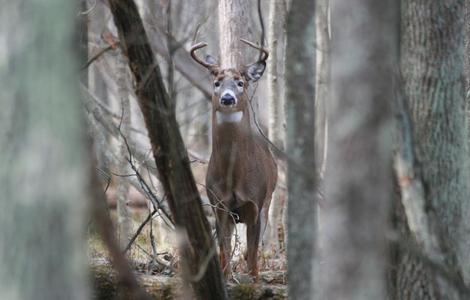Hunting Post Rut Whitetail Deer
At this point in the season, most of the whitetail are on the tail-end of the rut. There are a few areas of the state that are notable exceptions. For example, the breeding season and deer hunting in South Texas rut just warming up. However, deer in most parts of the state have finished the first and most important part of the breeding cycle. Successfully hunting post rut whitetail deer generally means shifting strategies.
The “post rut” does necessarily mean ALL breeding activity is over. In fact, does that were not bred during will come back into heat 28 days later. This cycle continues until all does are bred. Bucks will continue to look for these ladies even though two to three breeding cycles have passed. However, with receptive does waning, bucks switch gears. You need to switch gears, too. This article provides still some tactics you can use to be successful at hunting post rut whitetail deer during the late season.
Why Hunting Post Rut Whitetail Deer is Different?
Once the primary rut is over, does will search out winter food sources and start to regroup. Early season deer hunting strategy usually calls for hunters setting up along scrapes or even rub lines. However, the success rate of this technique drops off rapidly after the majority of the rut as occurred.
Rather than looking for buck sign, turn your attention to looking for signs of does. Find the area of the property where you hunt that has the highest concentration of does. Go there. This may not be the place where you normally hunt deer. In fact, that’s a good thing! Deer can pattern hunters just as easy, if not easier, than hunters can pattern deer. After all, the deer are out there all of the time.
Doe, Doe, Doe… Buck!
If there is a single un-bred doe on your hunting property, the odds of you seeing that deer are better where you have the most deer. This should make a lot of sense. However, you would be surprised at the number of hunters that always see deer in one particular area, but never hunt that location. Instead, they continue to drive to their stand and wait it out, hoping that something changes.
Whitetail deer are wise late in the season. Of course, the deer are still out there but they know the score by the time the late season rolls around. Hunting post rut whitetail deer means knowing and adapting to changes in deer behavior. In many cases, deer will not readily approach your food plot or feeder because of recent hunting pressure. Your job is to find out where those deer can be found after the sun comes up and the sun goes down.
Remember, although you are looking for late rut does, you are really only using them to attract a lonely buck to you. Once feeding areas have been identified, it will pay to find bedding areas. The value of bedding areas has been stressed in the literature so much that we are all blue in the face, but it is very important.
Get Cooking with Post Pressure Hunting
Let’s say you are hunting a food plot, a feeder, or an area where deer come to feed on native plants. It doesn’t matter. When deer have been hunted by you, your hunting buddies, and your neighbors, deer get smart. Searching for whitetail does can be the most difficult task, but your post rut success hinges on finding them. Any doe coming into a second or third estrus cycle will leave her scent, but where is she?
In many parts of the country, the doe segment of a deer population has a better age structure than the buck segment. In short, this means unless you are hunting a property that has a good deer management program in place, there are more old does running around than there are old bucks. We all know how this occurs. So yes, many of the does are actually smarter than the bucks we hunt because they have been through hunting season after hunting season after hunting season. And guess what? They are still there.
So what’s next? Simply said, evening feeding patterns are easier to predict than morning feeding patterns. This is because deer know they will bed up nearby after dark, especially during the dark of the moon. A common occurrence is for is for evening-feeding deer to “hang up” in nearby cover before heading out to feed just before sunset. So if you are hunting an evening food source, rest assured that deer are not far away. The trick to is to get to them before your hunting light is gone.
Where to Find Success With Post Rut Deer?
I mentioned deer bedding areas above because they are important. Post rut bucks spend more time resting during the day to recuperate. In addition, they will stay there to avoid all the hunting pressure. Identify thick cover or secluded bedding areas where deer feel safe. Bucks often bed close to both food and water sources. So, what’s the move here?
Set up near well-used trails leading from these bedding areas to potential feeding areas. Hunting post rut whitetail deer is about knowing where a buck will fill his belly.

Best Strategy for Hunting Food Sources Post Rut?
Hunting post rut whitetail deer and food sources go hand-in-hand. This is where hunting setup is important. Let’s say you have identified the highest density of deer the food source these animals are using. In addition, you know where the deer in your area are bedding up after dark.
Hunting between a feeding and bedding area may not payoff on late-feeding deer at this point in the season. However, the trick is to hunt near the food source, but between the food source and the direction the deer are coming from. That’s right, you are going to have to get out of your tripod or box blind and catch them in staging areas.
Once the feeding route is determined, back off the food source by about 100 to 150 yards and set up shop. Make either a small inconspicuous brush blind or use a climbing stand. Make sure you get there before the deer, and watch the wind. At this point, keep an eye out for either a hungry buck or one looking for a needle in a haystack, an unbred doe!
Weather and Hunting Post Rut Whitetail
Weather is the most important factor is late season success. Why? Deer activity increases with cold fronts, snow, or after a storm as they feed to stay warm. Deer need to eat when it gets cold. With this in mind, pay attention to the weather forecast and hunt when weather conditions are in your favor.
The best time for hunting post rut whitetail is immediately before or after weather changes. These changes are when deer are most likely to move. Cold weather gets deer on their feet. Unfortunately, extremely cold weather is also tough on hunters. Be prepared for long sits in colder conditions and dress accordingly.
